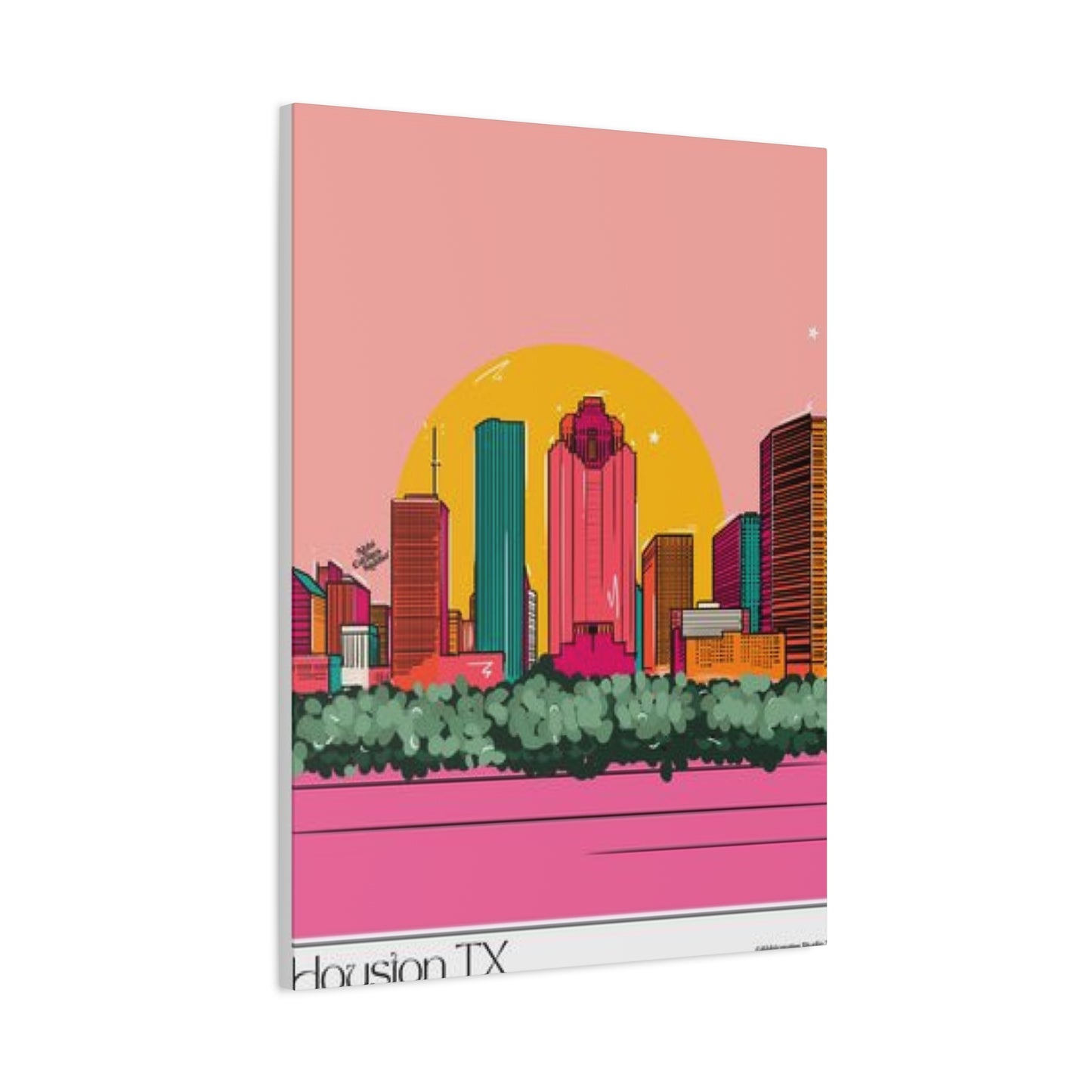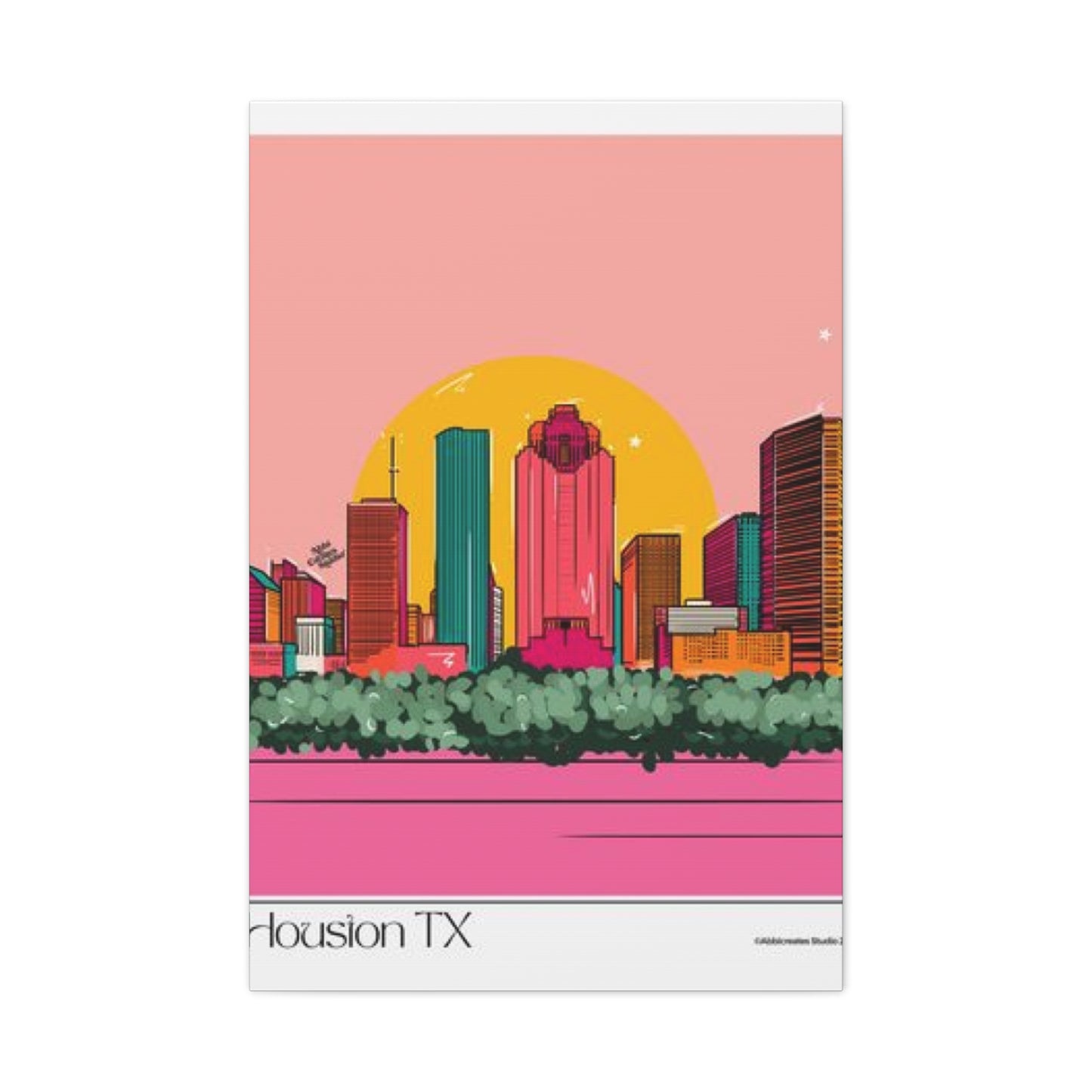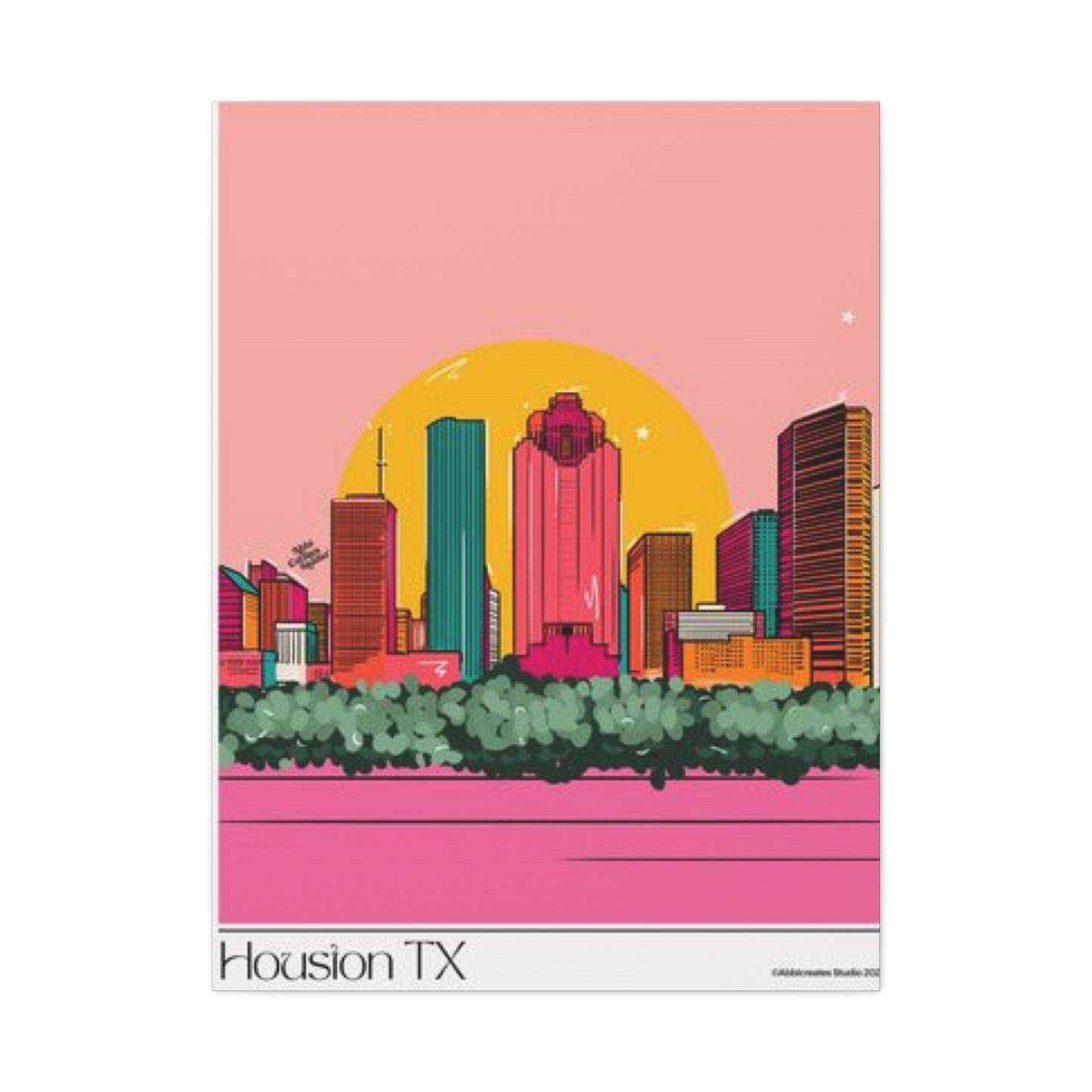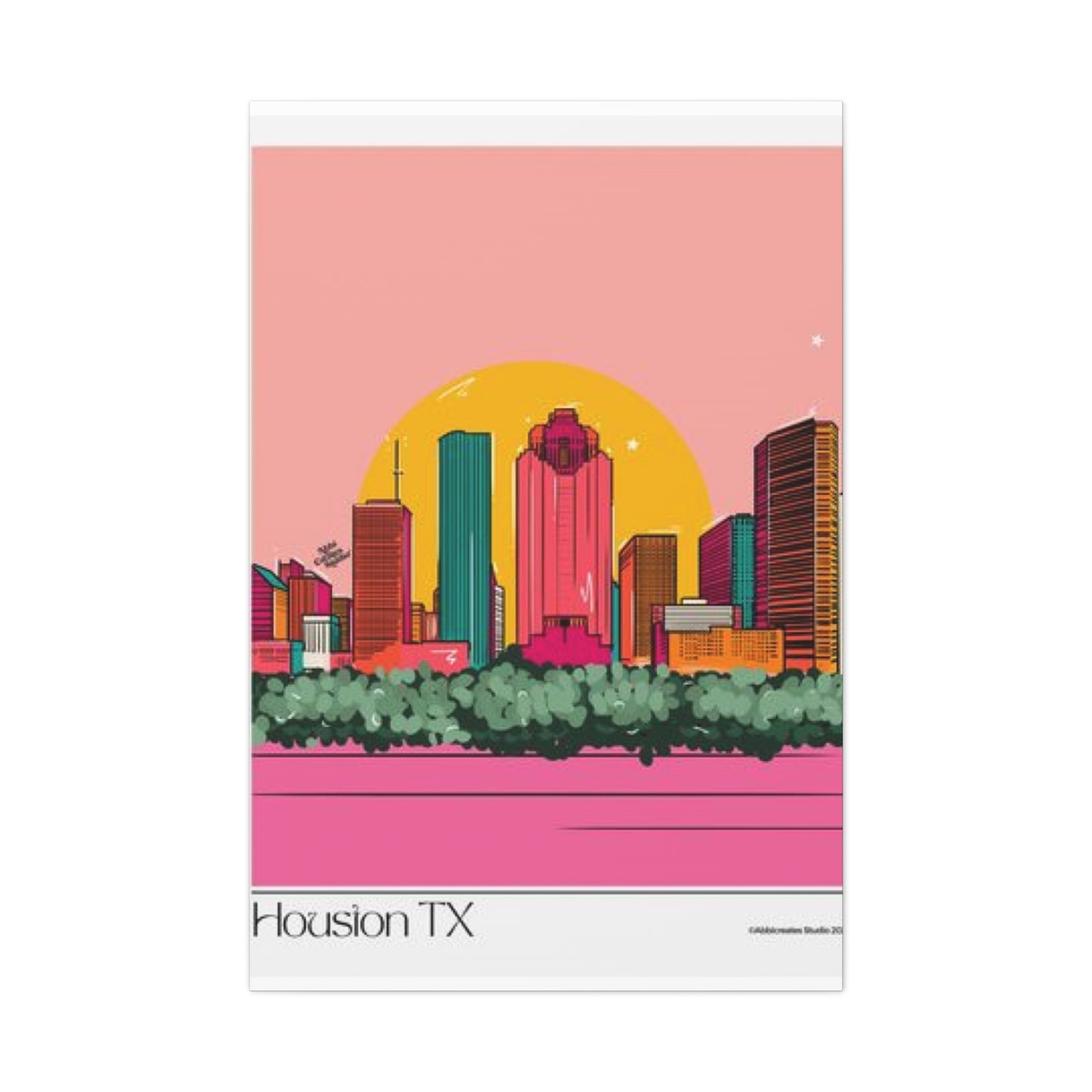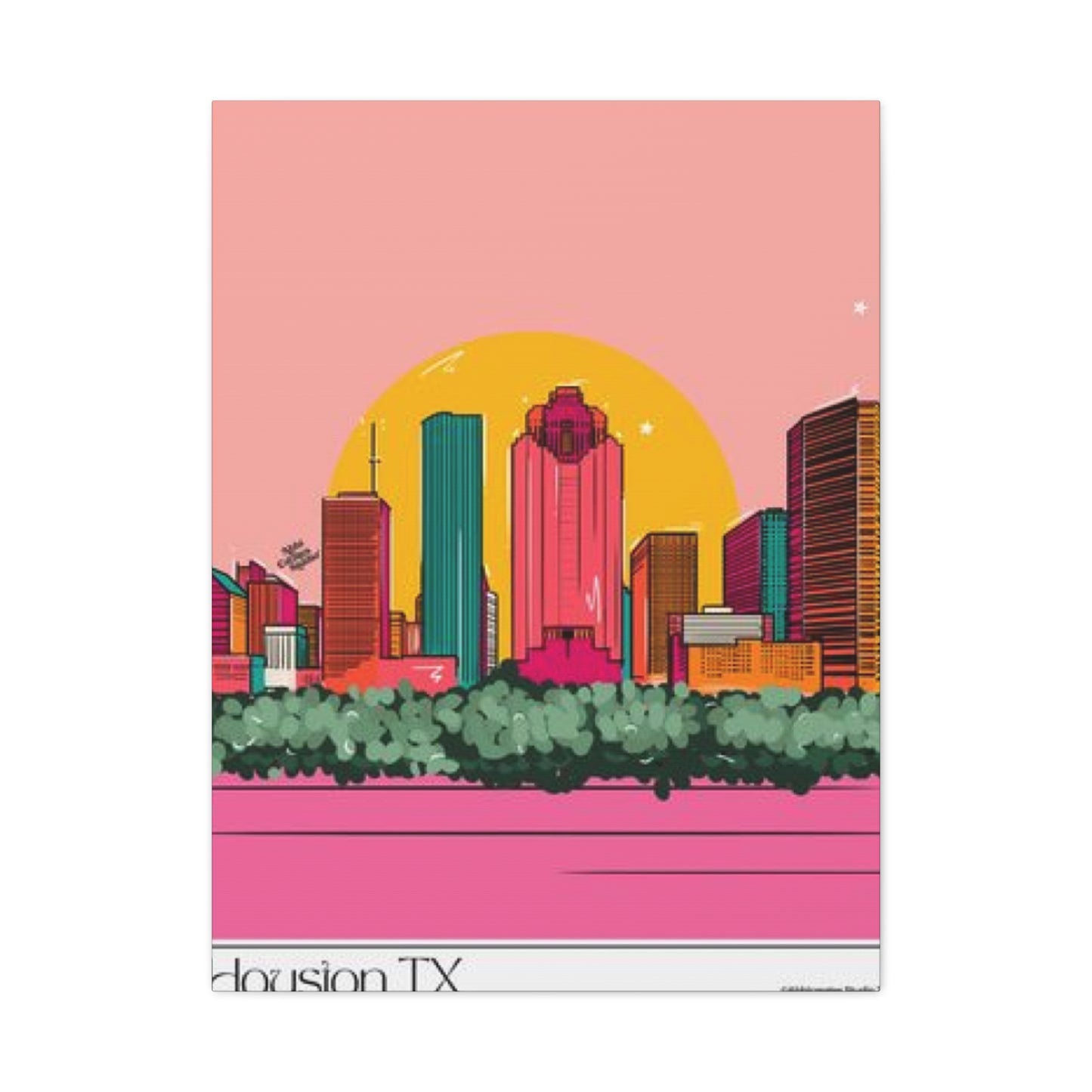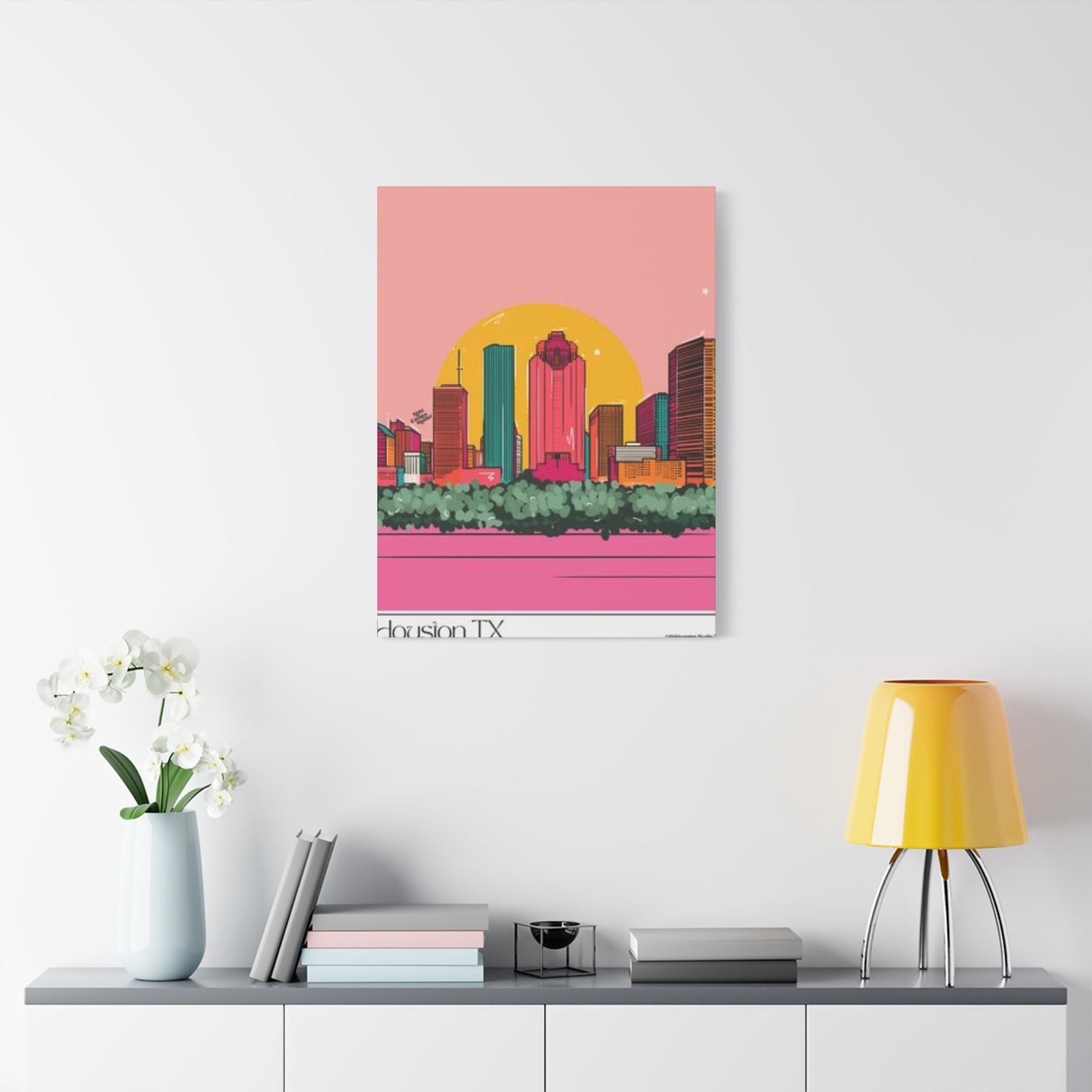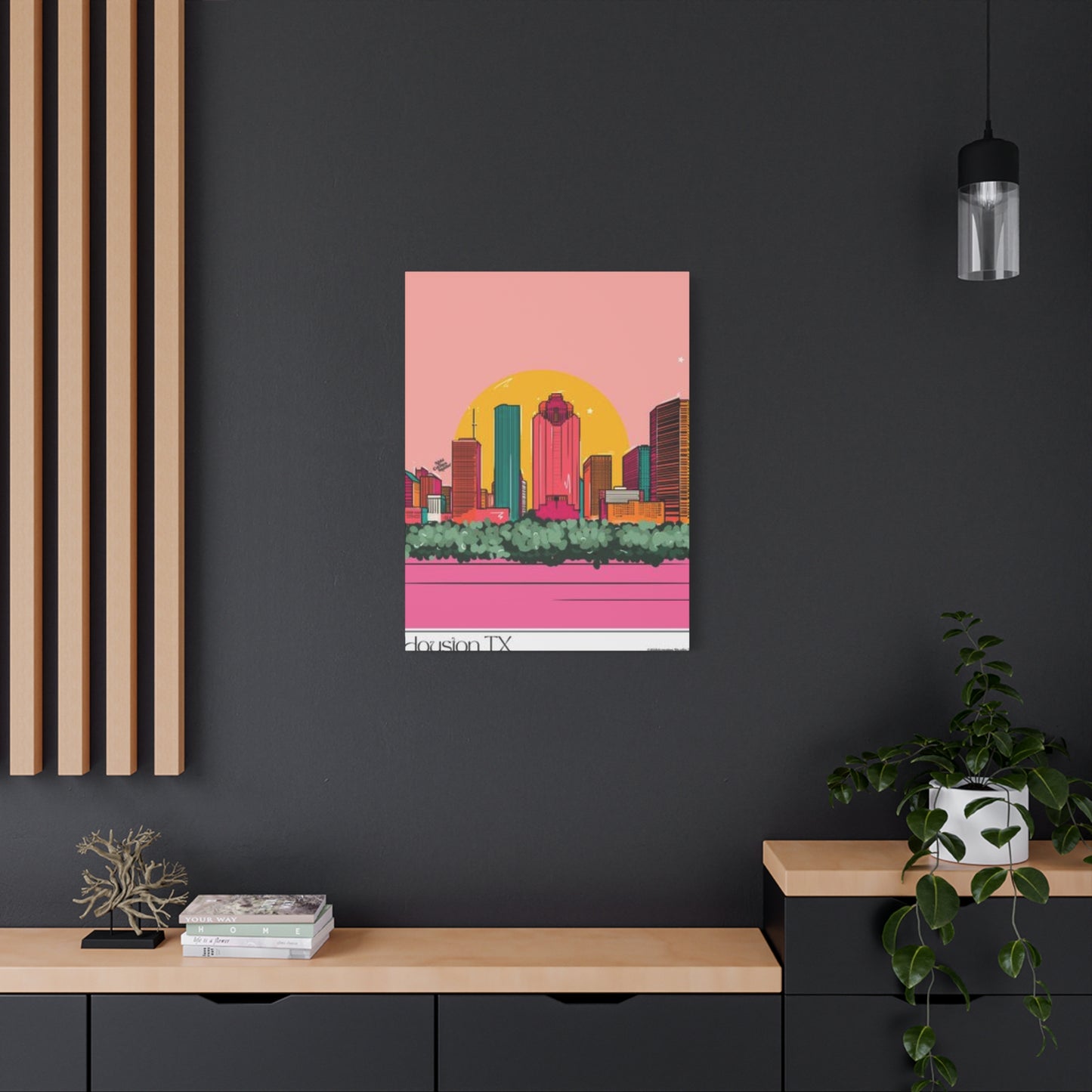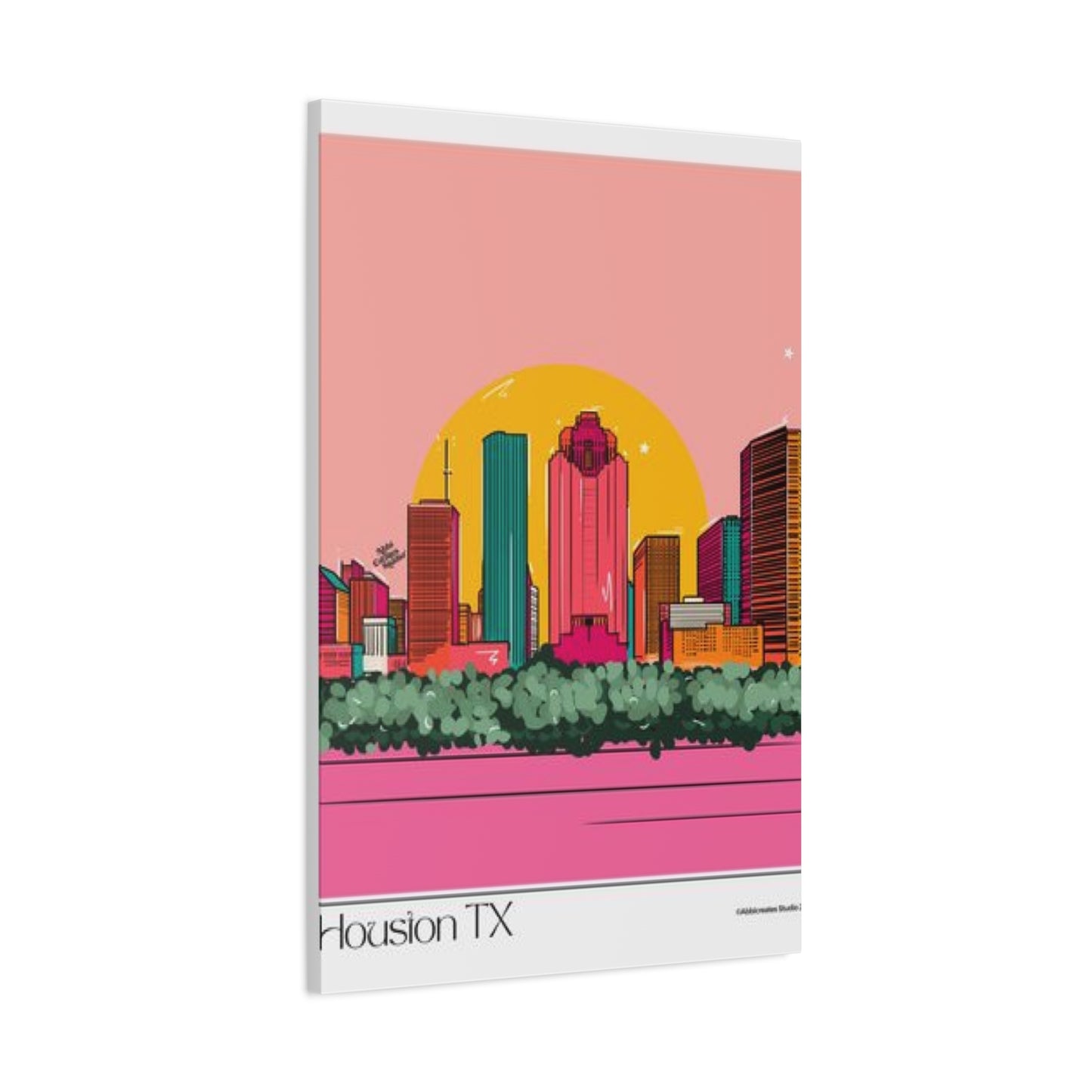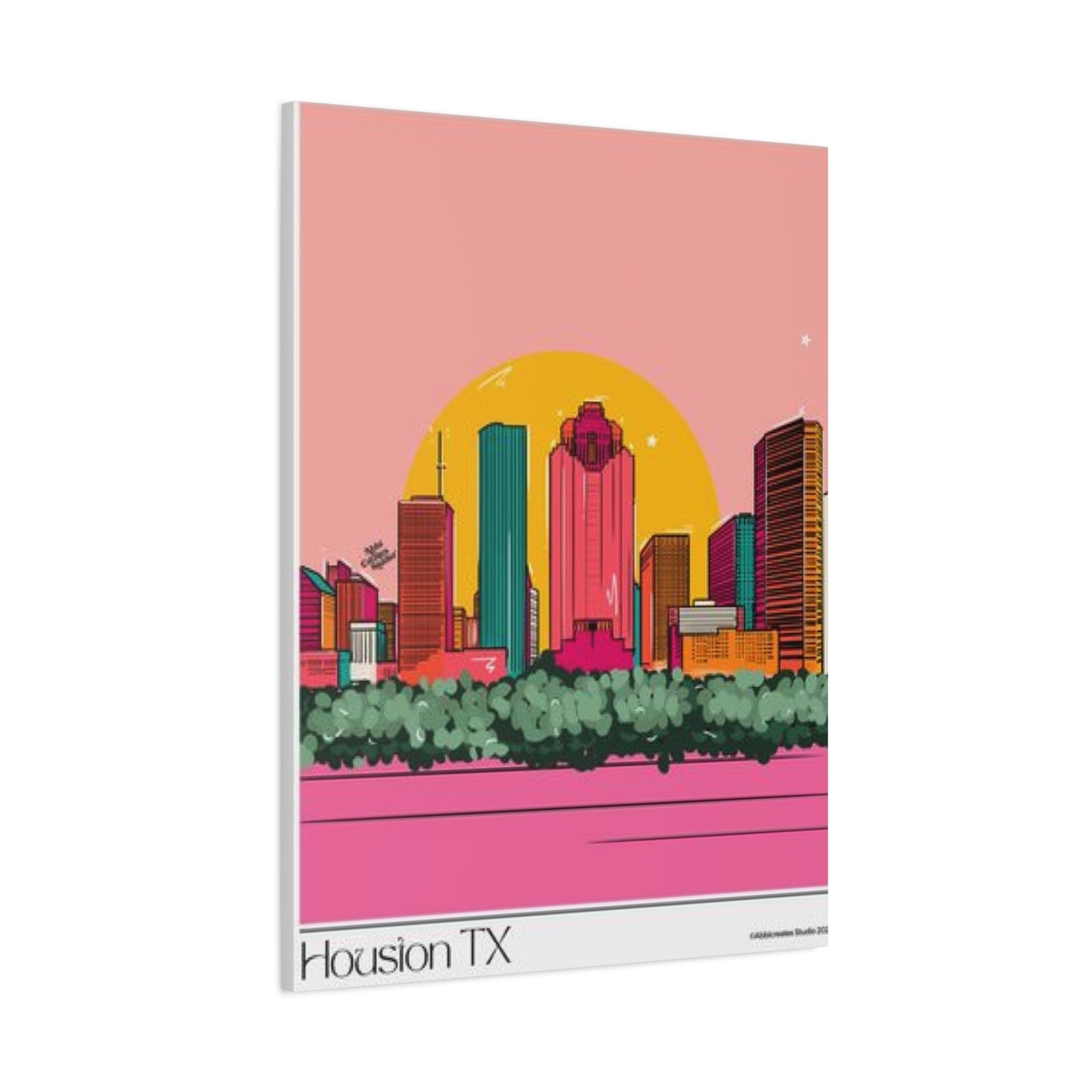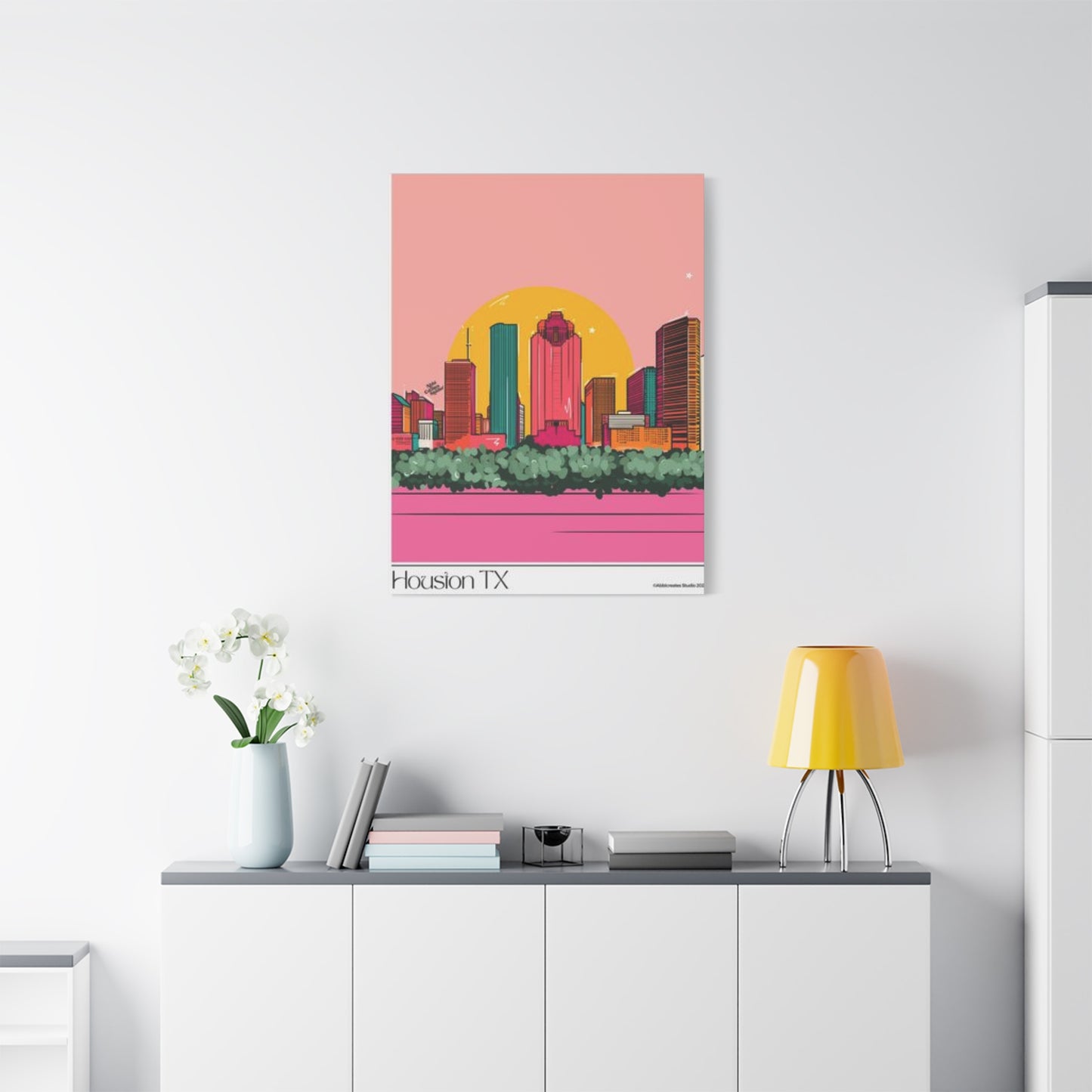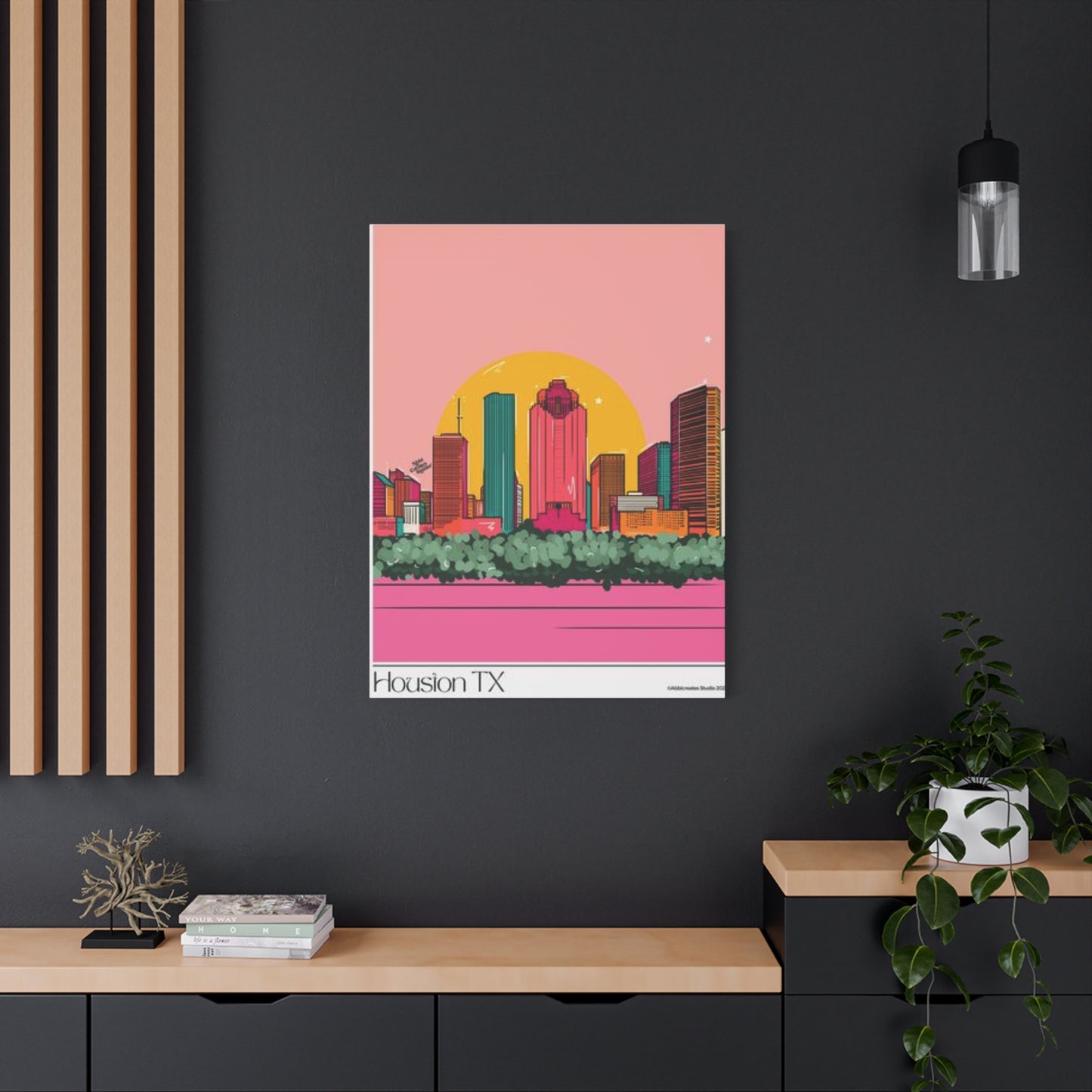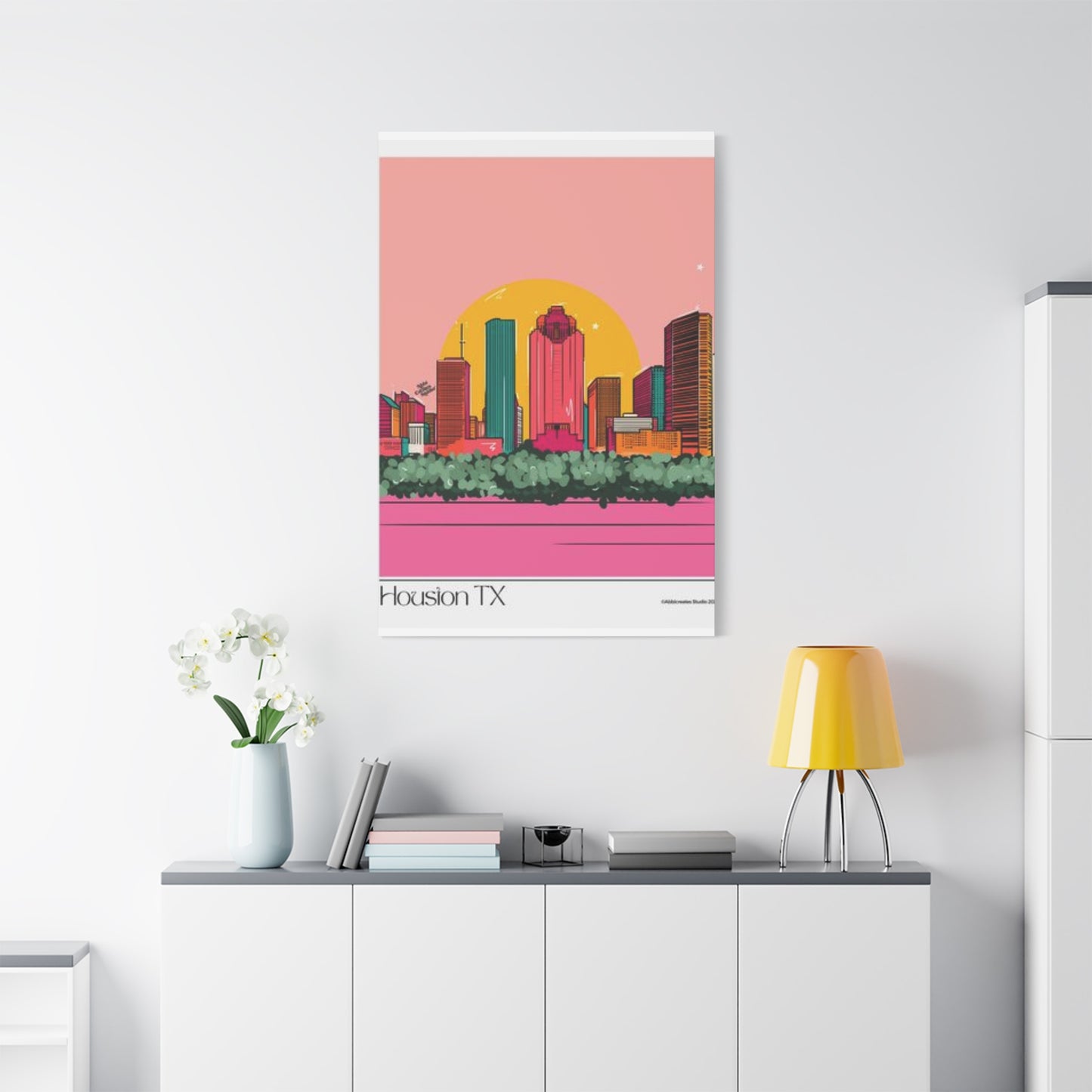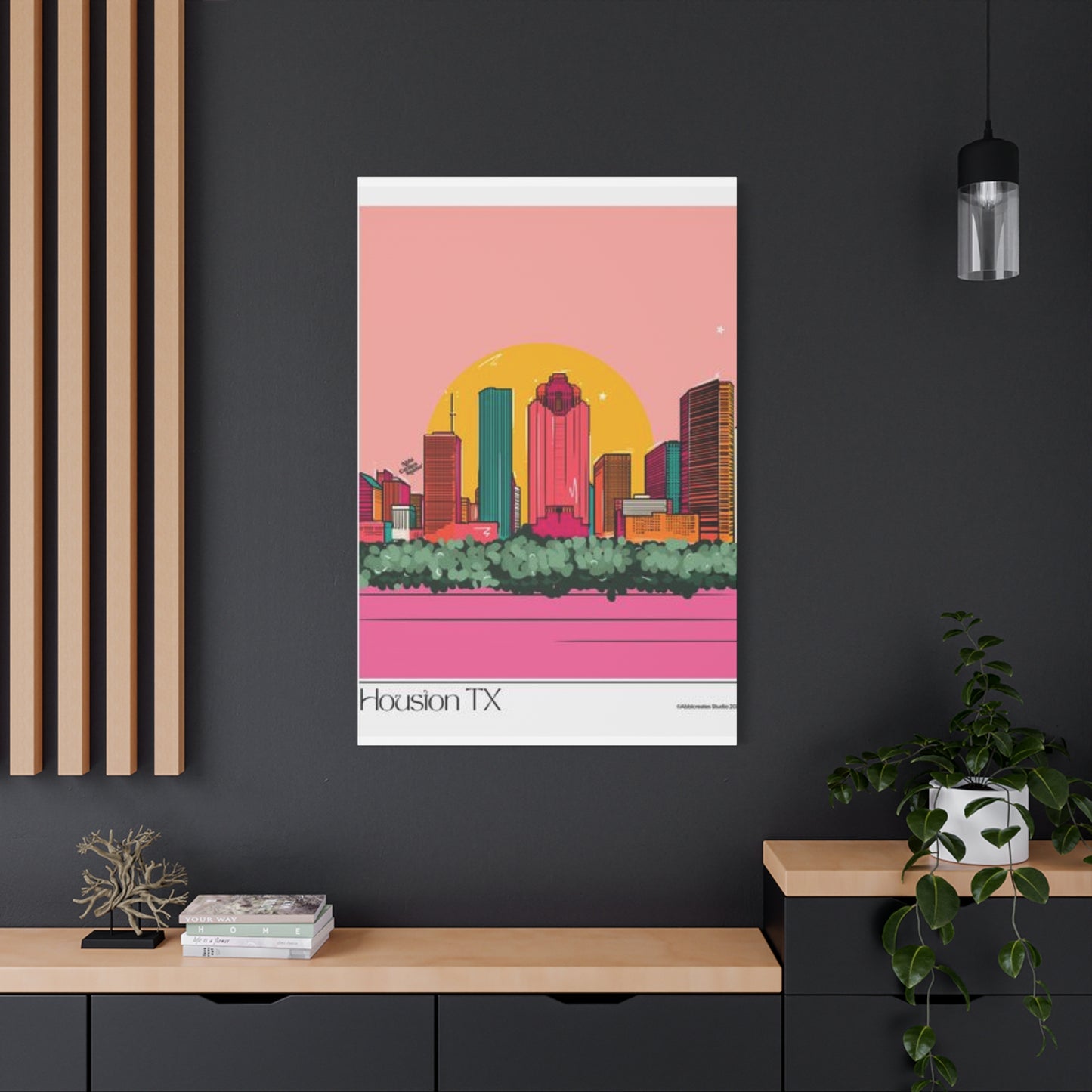Houston Skyline Wall Art: Vibrant Cityscapes That Define Modern Living
Houston stands as America's fourth-largest city, boasting one of the most recognizable and evolving skylines in the nation. The Bayou City's architectural landscape presents a magnificent canvas of towering structures, reflecting both its rich history and ambitious future. When translated into wall art, Houston's skyline becomes more than mere decoration—it transforms into a powerful statement piece that captures the essence of urban sophistication and Texas pride.
The appeal of Houston skyline wall art extends far beyond simple aesthetics. These pieces serve as visual narratives that tell the story of a city built on innovation, diversity, and relentless growth. From the gleaming towers of downtown to the sprawling medical center, Houston's silhouette represents opportunity, progress, and the quintessential American dream realized in concrete and steel.
Contemporary homeowners and art enthusiasts increasingly seek pieces that resonate with their personal connections to place and identity. Houston skyline wall art fulfills this desire by offering both visual impact and emotional resonance. Whether you're a lifelong Houstonian, a recent transplant, or simply someone who appreciates the beauty of urban landscapes, these artistic interpretations of the city's profile provide a meaningful way to incorporate civic pride into your living environment.
The versatility of Houston skyline art makes it suitable for various settings, from residential homes to corporate offices, restaurants to hotel lobbies. The key lies in understanding how different artistic approaches—from realistic photography to abstract interpretations—can complement different environments while maintaining the distinctive character that makes Houston's skyline instantly recognizable.
Colorful Expressions Painting Houston's Architectural Majesty
Color serves as the primary vehicle for transforming Houston's skyline from a simple architectural profile into dynamic artistic expression. The strategic use of vibrant hues breathes life into what might otherwise be static representations of buildings and structures. Artists working with Houston's skyline often employ bold color palettes that reflect both the city's energy and its diverse cultural landscape.
The psychology of color plays a crucial role in how viewers perceive and connect with Houston skyline art. Warm oranges and reds can evoke the intense Texas sunsets that paint the city each evening, while cool blues and purples might represent the calm waters of Buffalo Bayou winding through the urban core. These color choices create emotional resonances that extend beyond mere visual appeal.
Professional artists understand that Houston's skyline offers unique opportunities for color experimentation. The city's relatively flat topography means that the skyline appears as a dramatic wall rising from the prairie, creating natural opportunities for gradient effects and color transitions. This geographical characteristic allows artists to employ techniques that might not work as effectively with more undulating urban landscapes.
The interplay between natural and artificial light sources in Houston provides another dimension for colorful interpretations. The city's famous humidity creates atmospheric effects that filter and diffuse light in unique ways, often resulting in spectacular visual phenomena that artists can capture and enhance through creative color application.
Many successful Houston skyline pieces incorporate the city's signature colors—the deep blues of the various sports teams, the warm earth tones that reflect the surrounding landscape, and the metallic silvers and golds that mirror the gleaming surfaces of the downtown towers. These color connections help viewers immediately identify with the piece while appreciating its artistic merit.
The technique of color layering adds depth and complexity to Houston skyline art. Artists might begin with a base layer representing the sky, then build up successive layers of color to represent different elements of the cityscape. This approach creates visual depth that draws viewers into the piece while maintaining the recognizable silhouette that makes Houston's skyline distinctive.
Seasonal color variations offer another avenue for artistic exploration. Houston's subtropical climate means that lighting conditions change dramatically throughout the year, from the crisp, clear light of winter to the hazy, golden glow of summer. Artists can capture these seasonal moods through careful color selection, creating pieces that resonate with viewers' memories of the city in different seasons.
The use of complementary colors creates visual tension and interest in Houston skyline art. Pairing warm foreground elements with cool background tones, or using contrasting colors to highlight specific buildings or architectural features, can create pieces that command attention while remaining visually balanced.
Dynamic Cityscape Representations Capturing Houston's Energy
Houston's reputation as a dynamic, ever-changing city demands artistic representations that convey movement, growth, and energy. Static depictions, while beautiful, often fail to capture the essential character of a city that never seems to stand still. Dynamic cityscape representations employ various artistic techniques to suggest motion, development, and the constant pulse of urban life.
The concept of dynamic representation in Houston skyline art often begins with compositional choices. Artists might use diagonal lines, asymmetrical arrangements, or flowing forms to suggest movement even within a fundamentally static medium. The positioning of buildings at angles, the suggestion of wind effects on flags or clouds, or the inclusion of transportation elements can all contribute to a sense of dynamism.
Brushwork technique plays a significant role in creating dynamic effects. Loose, gestural brushstrokes can suggest the energy and movement of city life, while more controlled techniques might be used to anchor certain elements and provide visual stability. The contrast between these different approaches within a single piece can create compelling visual rhythms that keep viewers engaged.
The inclusion of infrastructure elements—highways, bridges, construction cranes—adds another layer of dynamism to Houston skyline art. These elements not only provide compositional interest but also tell the story of a city in constant motion, always building, always growing, always reaching toward the future. Houston's extensive freeway system, in particular, offers artistic opportunities to suggest movement through curved lines and flowing forms.
Lighting effects contribute significantly to dynamic cityscape representations. Houston's skyline takes on different characters throughout the day, from the soft pastels of dawn to the dramatic contrasts of sunset to the sparkling lights of evening. Artists can use these lighting variations to create pieces that seem to pulse with life and energy.
The representation of weather phenomena adds another dynamic element to Houston skyline art. The city's location on the Gulf Coast means it experiences dramatic weather patterns—from thunderstorms that create spectacular lighting displays to the soft, diffused light of foggy mornings. These atmospheric conditions provide rich material for artists seeking to create dynamic representations.
Scale variations within Houston skyline compositions can enhance the sense of dynamism. By varying the size and prominence of different elements, artists can create visual rhythms that guide viewers' eyes through the composition while suggesting the complexity and variety of urban environments.
The technique of implied motion—suggesting movement that extends beyond the boundaries of the artwork—helps create dynamic effects. This might involve showing only portions of moving elements, using directional lines that lead off the canvas, or creating compositions that suggest continuation beyond what's immediately visible.
Temporal layering, where different time periods are suggested within a single composition, adds conceptual dynamism to Houston skyline art. This might involve showing both historical and contemporary elements, suggesting the city's evolution over time, or creating compositions that seem to capture multiple moments simultaneously.
Urban Silhouette Mastery in Houston Artistic Interpretations
The art of silhouette creation requires a deep understanding of Houston's distinctive architectural profile and the ability to distill complex urban forms into their most essential elements. Successful urban silhouettes capture the character and recognition factors of Houston's skyline while maintaining artistic integrity and visual impact.
Houston's skyline offers unique advantages for silhouette artists due to its distinctive profile features. The JPMorgan Chase Tower, with its stepped crown, provides an instantly recognizable focal point, while the Wells Fargo Plaza's peaked top and the Heritage Plaza's distinctive architectural details add variety and interest to the silhouette line. These landmark buildings serve as anchor points around which artists can build compelling compositions.
The technique of selective emphasis allows artists to highlight certain architectural elements while de-emphasizing others, creating silhouettes that are both recognizable and artistically satisfying. This might involve exaggerating the height or prominence of certain buildings, adjusting proportions for better visual balance, or eliminating less significant structures that might clutter the composition.
Negative space plays a crucial role in effective silhouette design. The areas between buildings, the shapes created by architectural details, and the relationship between the skyline and the sky all contribute to the overall impact of the piece. Houston's skyline, with its mix of architectural styles and building heights, creates interesting negative space patterns that skilled artists can exploit for maximum visual effect.
The treatment of atmospheric perspective in silhouette work adds depth and realism to Houston skyline art. Even within the constraints of silhouette technique, artists can suggest distance and three-dimensionality through subtle variations in tone, the suggestion of atmospheric haze, or the careful layering of foreground and background elements.
Detail selection becomes critical in silhouette work, where every line and shape must contribute to the overall recognition and impact of the piece. Houston's buildings offer numerous distinctive details—antenna structures, architectural ornaments, unique rooflines—that can be included or abstracted to enhance the silhouette's effectiveness.
The integration of natural elements into Houston silhouettes provides opportunities for artistic enhancement. The inclusion of cloud formations, bird flights, or tree lines can add visual interest while maintaining the focus on the urban profile. Houston's flat surrounding landscape means that skyline silhouettes often benefit from the addition of such elements to create more balanced compositions.
Stylistic variations in silhouette technique allow artists to create pieces that range from photorealistic accuracy to highly stylized interpretations. Some artists prefer precise, architectural accuracy, while others might choose to emphasize certain characteristics or create more abstract interpretations that capture the essence rather than the exact appearance of Houston's skyline.
The use of gradients within silhouette work can add sophistication and depth to Houston skyline pieces. Rather than using solid black forms, artists might employ subtle tonal variations that suggest volume, lighting, or atmospheric effects while maintaining the essential silhouette character.
Artistic Interpretations Bringing Houston's Character to Life
Houston's character as a city defies simple categorization—it's simultaneously cosmopolitan and down-to-earth, traditional and cutting-edge, sprawling and intimate. Effective artistic interpretations of the city's skyline must somehow capture these contradictions and complexities while creating visually compelling pieces that resonate with viewers on multiple levels.
The multicultural nature of Houston provides rich material for artistic interpretation. The city's incredible diversity—it's one of the most ethnically diverse cities in the United States—can be reflected in artistic choices ranging from color palettes that reference various cultural traditions to compositional approaches that echo different artistic styles and techniques from around the world.
Houston's reputation as the energy capital of the world offers another avenue for artistic interpretation. Artists might incorporate elements that reference the oil and gas industry, renewable energy initiatives, or the general sense of power and industry that defines much of the city's economy. These elements can be integrated subtly into skyline compositions or featured more prominently depending on the artist's intent.
The city's connection to space exploration through NASA's Johnson Space Center provides opportunities for artistic interpretation that extend beyond terrestrial concerns. Artists might incorporate cosmic elements, suggest upward movement toward the heavens, or use color palettes and forms that reference space exploration themes while maintaining focus on the earthbound skyline.
Cultural institution representation adds depth to Houston skyline interpretations. The city's renowned museum district, its thriving arts scene, and its world-class performing arts venues all contribute to Houston's character. While these elements might not be directly visible in skyline views, their influence can be felt through artistic choices that reflect sophistication, creativity, and cultural awareness.
Houston's position as a major port city influences its character and can be reflected in artistic interpretations. The connection to international trade, the movement of goods and people through the city, and the cosmopolitan atmosphere that comes with being a major transportation hub all provide material for artistic exploration.
The contrast between Houston's modern appearance and its relatively recent development as a major city creates interesting opportunities for artistic interpretation. Unlike cities with centuries of architectural history layered upon each other, Houston presents a more unified, contemporary profile that can be interpreted as representing forward momentum and future possibilities.
Weather patterns and natural phenomena specific to Houston's Gulf Coast location provide distinctive elements for artistic interpretation. The city's famous humidity, its spectacular thunderstorms, its occasional encounters with tropical weather systems, and its generally warm climate all contribute to its character and can be reflected in artistic choices.
The entrepreneurial spirit that drives Houston's economy and culture offers another dimension for artistic interpretation. The city's business-friendly environment, its history of innovation, and its reputation for getting things done can be suggested through dynamic compositions, bold color choices, and confident artistic execution.
Contemporary Approaches to Houston Cityscape Artistry
Modern artistic approaches to Houston cityscape representation embrace both traditional techniques and cutting-edge innovations, creating pieces that speak to contemporary sensibilities while honoring the timeless appeal of urban landscape art. These approaches often incorporate elements from various artistic movements while maintaining focus on Houston's distinctive visual characteristics.
Abstract expressionist influences appear in many contemporary Houston skyline pieces, where artists prioritize emotional impact and personal interpretation over literal representation. These works might use Houston's skyline as a starting point for explorations of color, form, and composition that create powerful visual experiences without being bound by architectural accuracy.
Photorealistic approaches continue to find favor among artists and collectors who appreciate technical precision and attention to detail. These pieces often showcase the artist's skill while creating works that can serve as historical documents, capturing Houston's skyline at specific moments in its ongoing evolution.
Mixed media approaches combine traditional painting techniques with collage elements, digital components, or three-dimensional additions to create textured, layered works that reflect the complexity of urban environments. Houston's diverse architectural styles and materials provide rich inspiration for these multi-faceted artistic explorations.
Digital art techniques offer new possibilities for Houston skyline representation, from purely digital creations to hybrid works that combine traditional and digital elements. These approaches can achieve effects difficult or impossible with traditional media while opening up new possibilities for reproduction and distribution.
Minimalist interpretations focus on reducing Houston's complex skyline to its essential elements, creating works that achieve maximum impact through careful selection and arrangement of key features. These pieces often emphasize the power of suggestion over detailed representation.
Street art influences bring urban authenticity to Houston skyline art, incorporating elements from graffiti culture, poster art, and other forms of public artistic expression. These approaches often reflect the grassroots creativity that thrives in Houston's diverse neighborhoods.
Environmental consciousness influences contemporary Houston skyline art through works that address sustainability, climate change, and the relationship between urban development and natural systems. These pieces might incorporate green elements, reference renewable energy, or suggest environmental challenges and solutions.
Pop art sensibilities appear in Houston skyline works that use bright colors, bold graphics, and commercial art techniques to create pieces that are both accessible and visually striking. These approaches often celebrate the energy and optimism associated with American urban environments.
Installation art concepts expand Houston skyline representation beyond traditional flat surfaces, creating three-dimensional works or site-specific pieces that interact with their environments in unique ways. These approaches might involve projection mapping, sculptural elements, or interactive components.
Professional Printing Techniques for Houston Artwork Reproduction
The reproduction of Houston skyline artwork requires sophisticated printing techniques that can accurately capture the nuances of color, detail, and texture present in original pieces. Professional printing standards ensure that reproductions maintain the artistic integrity and visual impact of the originals while making these works accessible to broader audiences.
Giclée printing represents the gold standard for fine art reproduction, using high-resolution digital printing techniques with archival inks to create reproductions that can rival original artworks in quality and longevity. For Houston skyline art, giclée printing excels at reproducing subtle color gradients, fine architectural details, and complex atmospheric effects.
Color management becomes critical when reproducing Houston skyline artwork, particularly pieces that rely heavily on specific color relationships and atmospheric effects. Professional printing facilities use calibrated monitors, standardized color profiles, and controlled lighting conditions to ensure color accuracy throughout the reproduction process.
Paper and canvas selection significantly impacts the final appearance of Houston skyline reproductions. Different substrates can enhance different aspects of the artwork—smooth papers might be ideal for pieces with fine detail, while textured canvases can add depth to more impressionistic works. Houston skyline pieces often benefit from substrates that can handle wide color gamuts and deep contrasts.
Ink quality and composition affect both the immediate appearance and long-term stability of Houston skyline reproductions. Archival pigment inks resist fading and color shifts over time, ensuring that reproductions maintain their visual impact for decades when properly displayed and cared for.
Resolution requirements for Houston skyline artwork depend on the intended final size and viewing distance of reproductions. Pieces intended for large-format display require higher resolution capture and printing to maintain sharpness and detail, while smaller pieces might achieve excellent results with more modest resolution requirements.
Proofing processes allow artists and publishers to review and approve reproductions before final printing, ensuring that the reproduced pieces meet quality standards and accurately represent the original artworks. Multiple proofing rounds might be necessary to achieve optimal results, particularly for pieces with complex color relationships.
Finishing options can enhance Houston skyline reproductions while protecting them from environmental damage. UV-resistant coatings, protective sprays, and proper mounting techniques all contribute to the longevity and presentation quality of reproduced works.
Quality control measures throughout the printing process ensure consistent results across multiple reproductions. This includes regular equipment calibration, ink and paper quality monitoring, and systematic quality checks at various stages of production.
Limited edition printing adds value and exclusivity to Houston skyline reproductions while allowing artists to control the availability and distribution of their works. Proper documentation and authentication procedures ensure the integrity of limited edition releases.
Canvas Selection and Preparation for Houston Cityscape Art
The choice of canvas and its preparation significantly impact both the creation process and final appearance of Houston cityscape art. Different canvas types offer varying textures, absorbency, and working characteristics that can enhance or detract from the artist's intended effects.
Canvas weight and weave density affect how paint interacts with the surface and how much texture shows through in the finished piece. Heavy canvases with tight weaves provide smooth surfaces ideal for detailed architectural work, while lighter canvases with more open weaves might be better suited to looser, more expressive interpretations of Houston's skyline.
Cotton versus linen canvases offer different working characteristics for Houston skyline artists. Cotton canvases provide consistent, affordable surfaces with predictable working properties, while linen canvases offer superior archival qualities and distinctive textures that can enhance certain artistic approaches.
Priming and ground preparation establish the foundation for successful Houston skyline paintings. Proper priming ensures paint adhesion, color accuracy, and long-term stability while providing the surface characteristics needed for the artist's chosen technique.
Stretched versus panel canvases offer different advantages for Houston cityscape work. Stretched canvases provide traditional working surfaces with slight flexibility, while rigid panels offer completely stable surfaces that some artists prefer for detailed work or specific techniques.
Surface texture considerations become particularly important for Houston skyline art, where architectural details and atmospheric effects require different surface characteristics. Some artists prefer smooth surfaces that allow for precise line work, while others favor textured surfaces that add visual interest and can enhance certain painting techniques.
Size considerations for Houston skyline canvases depend on the intended composition and viewing environment. Large canvases can capture the grandeur and scale of the city's skyline, while smaller canvases might be better suited to intimate interpretations or specific architectural details.
Custom canvas preparation allows artists to create surfaces specifically tailored to their artistic vision for Houston skyline pieces. This might involve unique priming formulations, texture creation, or color tinting that supports the overall artistic concept.
Environmental factors in Houston's climate can affect canvas behavior and longevity. The city's high humidity and temperature fluctuations require consideration when selecting and preparing canvases for local creation or display.
Archival considerations ensure that Houston skyline artworks maintain their appearance and structural integrity over time. This includes using acid-free materials, appropriate sizing agents, and compatible painting media that won't cause deterioration or color changes.
Framing Solutions That Enhance Houston Wall Art
Proper framing transforms Houston wall art from simple decoration into sophisticated design elements that enhance both the artwork and its environment. The selection of appropriate framing materials, styles, and techniques can dramatically impact how Houston skyline pieces are perceived and appreciated.
Frame material selection should complement both the artwork and the intended display environment. Traditional wood frames offer warmth and classic appeal that can work well with more traditional Houston skyline interpretations, while metal frames might better suit contemporary or industrial-themed pieces.
Color coordination between frames and Houston skyline artwork requires careful consideration of both the dominant colors in the piece and the colors present in the display environment. Frames can either complement the artwork's color palette or provide neutral support that allows the artwork to take center stage.
Matting options provide additional opportunities to enhance Houston wall art while protecting the pieces from direct contact with glass or acrylic. Mat colors and textures should be selected to support the artwork without competing for attention or creating distracting visual conflicts.
Glass versus acrylic glazing offers different advantages for Houston wall art display. Regular glass provides excellent clarity and scratch resistance, while specialty glasses can reduce reflections or filter harmful UV light. Acrylic alternatives offer lighter weight and shatter resistance but may be more susceptible to scratching.
Custom framing solutions allow for unique presentations that can enhance specific aspects of Houston skyline artwork. This might involve unusual proportions, multiple openings for series pieces, or specialized mounting techniques that create interesting visual effects.
Conservation framing techniques ensure the long-term preservation of valuable Houston wall art. This includes using acid-free materials, creating ventilation spaces, and avoiding adhesives or techniques that might damage the artwork over time.
Display lighting considerations become part of the framing solution when planning installations of Houston wall art. Frame selection and glazing choices can either enhance or interfere with artificial lighting schemes designed to showcase the artwork.
Installation hardware must be appropriate for both the weight of the framed Houston artwork and the wall surface where it will be displayed. Professional installation techniques ensure secure mounting while protecting both the artwork and the wall surface.
Multi-piece framing solutions work well for Houston skyline series or panoramic pieces that benefit from being displayed as coordinated groups. Consistent framing approaches create visual unity while allowing each piece to maintain its individual character.
Houston Landmark Integration in Skyline Compositions
Houston's distinctive landmarks provide focal points and recognition factors that can anchor successful skyline compositions while creating emotional connections for viewers familiar with the city. The strategic integration of these landmarks requires understanding both their visual characteristics and their symbolic significance to Houston residents and visitors.
The JPMorgan Chase Tower stands as Houston's tallest building and most recognizable landmark, its distinctive stepped crown making it instantly identifiable even in simplified or stylized representations. Artists often use this building as a compositional anchor, organizing other elements around its prominent vertical presence.
The Williams Tower, located in the Galleria area, offers another distinctive profile element with its unique architectural details and prominent position in the west Houston skyline. Its inclusion in skyline compositions can represent the city's westward expansion and suburban development patterns.
The Astrodome, while no longer the prominent feature it once was, remains an iconic Houston landmark that some artists choose to include in their skyline interpretations as a symbol of the city's history and cultural significance. Its distinctive dome shape provides an interesting contrast to the vertical emphasis of the downtown towers.
The San Jacinto Monument, though located outside the central city area, sometimes appears in expanded Houston skyline compositions as a representation of the region's historical significance and Texas identity. Its distinctive column and star create unique compositional opportunities.
Buffalo Bayou and its associated bridges provide natural elements that can be integrated into Houston skyline compositions, adding horizontal elements that balance the vertical emphasis of the building profiles. These water features also represent Houston's history as a port city and its connection to larger water systems.
The Houston Ship Channel, while not always visible in traditional skyline views, represents a significant aspect of Houston's identity as a major port city. Artists might suggest its presence through compositional elements or symbolic references.
Minute Maid Park and NRG Stadium represent Houston's sports culture and can be included in skyline compositions that seek to capture the full range of the city's character and interests. These structures add variety to the architectural profile while connecting with local pride and identity.
The Medical Center complex, while creating its own distinct skyline profile, sometimes gets integrated into broader Houston skyline representations as a symbol of the city's role as a major medical and research hub.
Hermann Park and the Museum District provide green and cultural elements that can be suggested in Houston skyline compositions, adding balance and representing the city's commitment to arts, culture, and quality of life.
Color Theory Applications in Houston Urban Art
The application of color theory principles to Houston urban art creates more effective and emotionally resonant pieces while ensuring visual harmony and impact. Understanding how colors interact, influence perception, and create mood allows artists to make intentional choices that enhance their Houston skyline compositions.
Warm color applications in Houston skyline art can evoke the intense heat and bright sunlight characteristic of the Texas Gulf Coast climate. Oranges, reds, and yellows might represent sunset scenes, summer heat, or the energetic character of the city itself. These colors tend to advance visually, making them effective for highlighting key architectural elements.
Cool color schemes can represent the calming aspects of Houston's urban environment—the blue of the sky, the green of the numerous parks and trees that line the city's streets, or the silver and blue tones of modern glass and steel architecture. Cool colors tend to recede visually, making them useful for creating depth and atmospheric effects.
Complementary color relationships create dynamic tension and visual interest in Houston skyline pieces. Pairing warm oranges with cool blues, or using red and green accents strategically throughout a composition, can create pieces that command attention while maintaining visual balance.
Analogous color schemes use colors that sit adjacent to each other on the color wheel, creating harmonious compositions that can effectively represent Houston's more subtle atmospheric conditions—the soft pastels of dawn, the golden light of late afternoon, or the deep blues of approaching storm systems.
Triadic color schemes employ three colors equally spaced around the color wheel, offering opportunities for vibrant, balanced compositions that can capture Houston's diverse architectural styles and energetic urban character. These schemes require careful balance to avoid creating chaotic or overwhelming effects.
Monochromatic approaches use variations of a single color to create sophisticated, unified compositions that emphasize form, texture, and composition over color relationships. These approaches can be particularly effective for creating mood pieces or emphasizing specific aspects of Houston's skyline profile.
Color temperature considerations help create realistic atmospheric effects in Houston skyline art. Warm light sources (sunset, artificial lighting) create different color casts than cool light sources (overcast skies, dawn light), and understanding these relationships helps artists create convincing lighting scenarios.
Saturation levels affect the emotional impact and realism of Houston skyline pieces. Highly saturated colors create energetic, dynamic effects that might suit contemporary interpretations, while more muted saturation levels can create sophisticated, subtle effects that work well in various display environments.
Color proportion and balance prevent any single color from overwhelming Houston skyline compositions while ensuring that all colors contribute effectively to the overall impact. The 60-30-10 rule (60% dominant color, 30% secondary color, 10% accent color) provides a useful framework for color distribution.
Psychological color effects influence how viewers respond to Houston skyline art on an emotional level. Blues can create feelings of calm and stability, reds can generate excitement and energy, greens can suggest growth and prosperity, while earth tones can provide grounding and connection to place.
Modern Techniques for Cityscape Photography Translation
Translating photographic cityscape images into painted or printed artwork requires understanding both the possibilities and limitations of different media while maintaining the essential character that makes Houston's skyline recognizable and compelling. Modern techniques bridge the gap between photographic accuracy and artistic interpretation.
High-resolution photography capture provides the detailed source material necessary for accurate Houston skyline translations. Modern digital cameras can capture architectural details, atmospheric conditions, and lighting nuances that serve as reference material for artistic interpretation while providing options for direct photographic reproduction.
HDR (High Dynamic Range) photography techniques allow photographers to capture the full range of light and shadow present in Houston skyline scenes, from bright sky areas to deep shadows between buildings. This expanded tonal range provides more source material for artistic translation and can create more dramatic final pieces.
Focus stacking techniques ensure that all elements of Houston skyline photographs remain sharp and detailed, from foreground elements to distant buildings. This comprehensive sharpness provides artists with detailed reference material for every element of the composition.
Color grading and digital enhancement can transform straightforward Houston skyline photographs into more artistic representations while maintaining photographic realism. These techniques can enhance mood, emphasize specific elements, or create unified color palettes that serve artistic goals.
Panoramic photography techniques capture Houston's expansive skyline in formats that might be impossible with traditional photography, creating source material for wide-format artwork that showcases the full breadth of the city's architectural profile.
Long exposure photography creates unique interpretations of Houston's skyline by capturing movement—traffic patterns, cloud motion, changing light conditions—that can inspire artistic techniques for suggesting motion and energy in static artwork.
Infrared photography reveals hidden aspects of Houston's urban landscape, showing heat patterns, vegetation health, and atmospheric conditions invisible to normal vision. These unique perspectives can inspire artistic interpretations that go beyond visible-light representations.
Composite photography techniques allow for the creation of Houston skyline images that combine multiple exposures, lighting conditions, or time periods into single compositions that serve as source material for artistic interpretation.
Digital painting techniques bridge photography and traditional artwork by using photographic sources as starting points for digital artistic creation. These approaches can achieve effects difficult with traditional media while maintaining connection to photographic reality.
Print-to-canvas transfers allow photographic Houston skyline images to be reproduced on traditional art surfaces, creating hybrid pieces that combine photographic accuracy with the texture and presence of traditional artwork.
Sizing Guidelines for Houston Wall Art Installations
Proper sizing of Houston wall art ensures that pieces create appropriate visual impact while maintaining proportional relationships with their display environments. Understanding scale relationships, viewing distances, and architectural contexts helps in selecting or creating Houston skyline pieces that enhance rather than overwhelm their settings.
Large-scale Houston wall art installations can create dramatic focal points in spacious environments like hotel lobbies, office reception areas, or residential great rooms. These pieces typically measure 48 inches or larger in their longest dimension and require substantial wall areas with appropriate viewing distances to be fully appreciated.
Medium-scale pieces work well in most residential and commercial settings, typically measuring between 24 and 48 inches in their longest dimension. These sizes provide significant visual impact without overwhelming smaller rooms while offering enough detail to reward closer inspection.
Small-scale Houston skyline pieces, measuring 24 inches or smaller, work effectively in intimate settings, office cubicles, or as parts of larger gallery wall arrangements. These pieces require careful composition and execution to maintain impact at reduced sizes.
Proportional relationships between artwork and wall area follow general design principles suggesting that artwork should occupy roughly 60-75% of available wall width. Houston skyline pieces, with their horizontal emphasis, often work well with this guideline while creating balanced compositions.
Viewing distance considerations affect both size selection and detail level in Houston wall art. Pieces intended for close viewing can include more architectural detail and subtle effects, while pieces for distant viewing should emphasize bold forms and strong color relationships.
Ceiling height relationships influence appropriate artwork proportions, with higher ceilings generally supporting taller artwork or multi-panel installations that take advantage of available vertical dimension. Houston skyline art can be adapted to various vertical proportions while maintaining its essential horizontal character.
Series installations of Houston wall art allow for creative sizing approaches that might not work with single pieces. Multiple related pieces can be sized differently to create visual rhythms and interesting compositional relationships while telling more complete stories about Houston's urban character.
Custom sizing options enable Houston wall art to be created specifically for particular installation requirements, ensuring perfect fit and proportion while maximizing visual impact for specific environments.
Practical considerations for Houston wall art sizing include shipping limitations, installation requirements, and long-term display needs. Very large pieces might require special handling and installation techniques that affect overall project costs and complexity.
Scale relationship considerations ensure that Houston skyline artwork maintains appropriate relationships with other design elements in the display environment, including furniture, architectural features, and additional artwork or decorative elements.
Exhibition Strategies for Houston-Themed Gallery Shows
Organizing successful exhibitions of Houston-themed artwork requires understanding both the artistic merit of the pieces and their cultural significance to local and visiting audiences. Effective exhibition strategies showcase Houston's urban character while creating engaging experiences for diverse viewer populations.
Thematic organization provides frameworks for Houston-themed exhibitions that go beyond simple geographic connections. Themes might include architectural evolution, cultural diversity, economic development, or artistic interpretations of urban growth, creating intellectual frameworks that help viewers understand and appreciate the exhibited works.
Chronological arrangements can trace Houston's development through artistic representations, showing how the city's skyline and character have evolved over time. This approach works particularly well when exhibition organizers have access to works from different time periods or artists from different generations.
Artist-focused exhibitions highlight individual artists' interpretations of Houston's urban landscape, allowing for deeper exploration of specific artistic visions and techniques while maintaining thematic unity. These shows can reveal how different artists see and interpret the same urban environment.
Medium-based exhibitions explore how different artistic media—painting, photography, digital art, sculpture—approach Houston's urban landscape, highlighting the unique possibilities and limitations of each medium while creating interesting comparative opportunities.
Neighborhood-focused exhibitions can celebrate specific areas of Houston, from downtown's central business district to the energy corridor, the medical center, or various cultural districts. This approach allows for more detailed exploration of particular urban areas while maintaining city-wide relevance.
Community engagement strategies ensure that Houston-themed exhibitions resonate with local audiences while remaining accessible to visitors. This might involve community input in exhibition planning, local artist participation, or programming that connects artwork to broader community interests and concerns.
Educational programming enhances Houston-themed exhibitions by providing context, background information, and opportunities for deeper engagement. Programs might include artist talks, architectural tours, historical presentations, or hands-on activities that help visitors understand Houston's development and character.
Interactive elements can enhance Houston-themed exhibitions by allowing visitors to engage with the artwork and themes in active ways. This might include digital mapping interfaces, augmented reality elements, or hands-on activities that complement the displayed artwork.
Collaborative approaches with local institutions—museums, historical societies, architectural organizations—can provide additional expertise, resources, and audience reach for Houston-themed exhibitions while creating valuable community partnerships.
Marketing strategies for Houston-themed exhibitions should emphasize both the artistic merit of the works and their local significance, appealing to art enthusiasts, local residents, and tourists interested in Houston's culture and development.
Marketing Houston Skyline Art to Diverse Audiences
Successfully marketing Houston skyline art requires understanding the diverse motivations, preferences, and purchasing behaviors of different audience segments while highlighting the unique appeal that Houston-themed artwork holds for various buyer categories.
Local resident marketing emphasizes emotional connections to place, civic pride, and personal memories associated with Houston's urban landscape. These buyers often appreciate accuracy, recognizable landmarks, and artistic interpretations that reflect their own experiences and feelings about the city.
Corporate client marketing focuses on professional presentation, brand alignment, and investment value. Houston businesses often seek artwork that reflects their connection to the city while creating appropriate atmospheres for offices, reception areas, and client meeting spaces.
Tourist and visitor marketing emphasizes Houston's unique character, memorable experiences, and portable representations of their visit. These buyers often prefer pieces that clearly identify Houston while offering artistic quality that justifies their investment.
Collector marketing highlights artistic merit, investment potential, and unique perspectives on Houston's urban landscape. Art collectors seek pieces that offer both current appeal and long-term value while adding distinctive elements to their collections.
Gift market approaches recognize that Houston skyline art often serves as presents for people with connections to the city. Gift marketing emphasizes emotional significance, personal connections, and presentation quality while offering various price points and sizing options.
Online marketing strategies utilize digital platforms to reach broader audiences while highlighting the visual appeal of Houston skyline artwork. High-quality photography, virtual gallery experiences, and social media engagement help potential buyers discover and connect with Houston-themed pieces.
Conclusion
Houston skyline wall art captures the bold spirit, architectural grandeur, and dynamic energy of one of America’s most iconic cities. More than just decorative pieces, these artworks serve as powerful visual narratives—celebrating the rich culture, innovation, and modern identity that define Houston. Whether illuminated in vibrant neon colors, silhouetted against dramatic sunsets, or rendered in sleek monochrome tones, Houston skyline art transforms any room into a statement of urban sophistication.
Perfect for both natives and admirers of the city, Houston skyline wall art resonates on a personal level. It connects people to the places they live, work, and love. For locals, it serves as a daily reminder of home pride—highlighting the downtown skyscrapers, historic landmarks, and sprawling vistas that shape the city’s unique character. For visitors or newcomers, these artworks symbolize ambition, diversity, and the ever-evolving story of Houston’s place in modern America.
These cityscapes bring an unmistakable sense of movement and energy into a space, making them ideal for contemporary interiors. Whether featured in a downtown apartment, a suburban living room, or an upscale office, Houston skyline art infuses a setting with urban flair while maintaining a clean and polished aesthetic. High-quality canvas prints and framed illustrations offer versatility in design, allowing you to choose from minimalist outlines, colorful abstracts, or detailed panoramic views.
What makes Houston skyline art especially compelling is its ability to merge architectural precision with artistic imagination. Some pieces highlight the modern lines of iconic buildings like the JPMorgan Chase Tower or Williams Tower, while others incorporate vibrant skies or creative lighting to elevate the mood. The result is a form of art that’s both grounded in realism and rich in emotional resonance.
In a modern home where design is about storytelling and identity, Houston skyline wall art does more than decorate—it defines. It’s a tribute to resilience, progress, and the vibrant pulse of a city constantly looking ahead. Whether you're showcasing your love for Houston or simply seeking to add metropolitan charm to your space, these cityscapes offer a bold yet tasteful way to celebrate modern living.

















